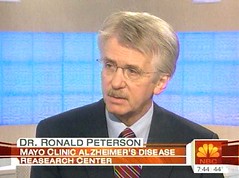Jeff Jarvis at Buzzmachine has written much about the explosion of TV and how newspapers need to re-think their role in the changing media landscape. Today I came across another example of how the media landscape is changing, as Desiring God Ministries is taking its daily half-hour radio program featuring Dr. John Piper off the 160 local radio stations that have carried it, and is moving to internet-only distribution (with a CD subscription option for the technologically challenged.)
Here’s how Executive Director Jon Bloom describes the rationale:
Why is this? Well, there are a number of reasons. But one simple fact is that radio is changing. Just a few years ago traditional radio was still the best way for a ministry like ours to make our message accessible to the largest number of people. But we are finding that this is no longer the case. A rapid technological evolution is occurring. Five years ago most adults in the U.S. did not have access to the internet. Today most use the internet regularly and most have broadband access. Five years ago few regularly used portable MP3 players. Today the popularity of these portable devices is skyrocketing. 59 million iPods have been purchased since October 2001—30 million of those so far this year! What’s happening is that more and more listeners are choosing these new technologies over radio so that they may listen to teaching programs whenever and wherever they wish. This is especially true of those under 50 years old, who comprise the great majority of our listeners.
Bloom highlights the criteria the Desiring God Board used for evaluating the most effective ways to invest its ministry resources: they are looking for means that are accessible, portable, transferable and economical. On the last point, spending $500,000 per year for air time on 160 local radio stations when 25 times as many people respond and contact the ministry through the internet delivery doesn’t seem like a wise use of resources.
If you listen to last Friday’s program, the radio finale, Dr. Piper discusses in more detail the reasoning behind the switch, and his philosophy of wanting to make the message accessible as broadly as possible (it is a world wide web) and without cost to the listener.
In The Long Tail, Chris Anderson describes how inventory costs and delivery costs approaching zero, combined with search, make many ventures economically feasible that would not work in the bricks-and-mortar world. This is another example of how that principle works, so that even a ministry that gives away its “product” for free, and makes it a point to not ask for contributions during the program, can thrive in the exploded world of radio.
Think about it. With 160 local radio stations the audience is limited to those markets. On the web, anyone, anywhere can hear. To paraphrase the words of Jesus, “Search, and you will find.”
Even better, in being freed from the format constraints of a 30-minute over-the-air broadcast, programs like Desiring God Radio, which are created from Sunday morning sermons that may average 40-45 minutes, can carry the entire message instead of splitting it into two overlapping segments.
As Robert Scoble pointed out, Leo LaPorte surveyed 20,000 podcast users and found that for podcasts, more is more.
That’s the Long Tail beauty of not having to aggregate a huge audience. The message doesn’t have to be dumbed down and reduced to the lowest common denominator to get ratings points. People who want to hear want more detail and depth, whether it’s the technical audience Leo surveyed or the spiritually interested group Dr. Piper reaches.
